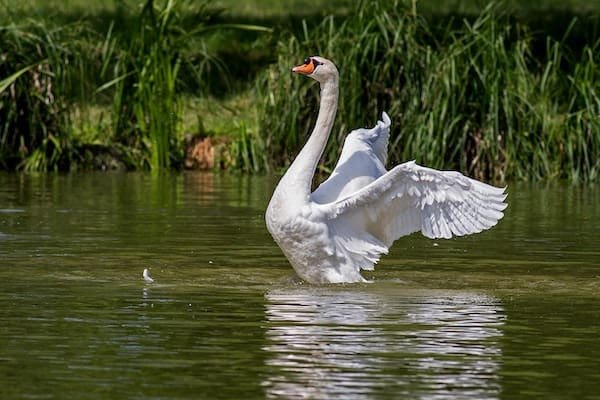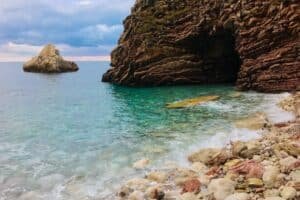A lake is a large body of water that is surrounded by land. Lakes are typically fed by rivers or streams, and they can be found in all corners of the world. While lakes may seem like peaceful oases, they are actually teeming with life. In fact, lakes are home to a wide variety of animals, from fish to amphibians to mammals.
Lakes are important ecosystems that are home to a wide variety of creatures. From fish to amphibians to mammals, there is a seemingly endless array of animals that rely on lake ecosystems. It is important to protect these ecosystems so that they can continue to support the diverse wildlife that depends on them.
Table of Contents
List of animals that live in lakes
The animals that live in a lake have adapted to the specific conditions of their environment. For example, many fish species have evolved to live in freshwater lakes, while others have adapted to live in saltwater lakes. Some animals, such as amphibians, can live in both types of lakes.
The following is a list of animals that live in lakes:
Fish
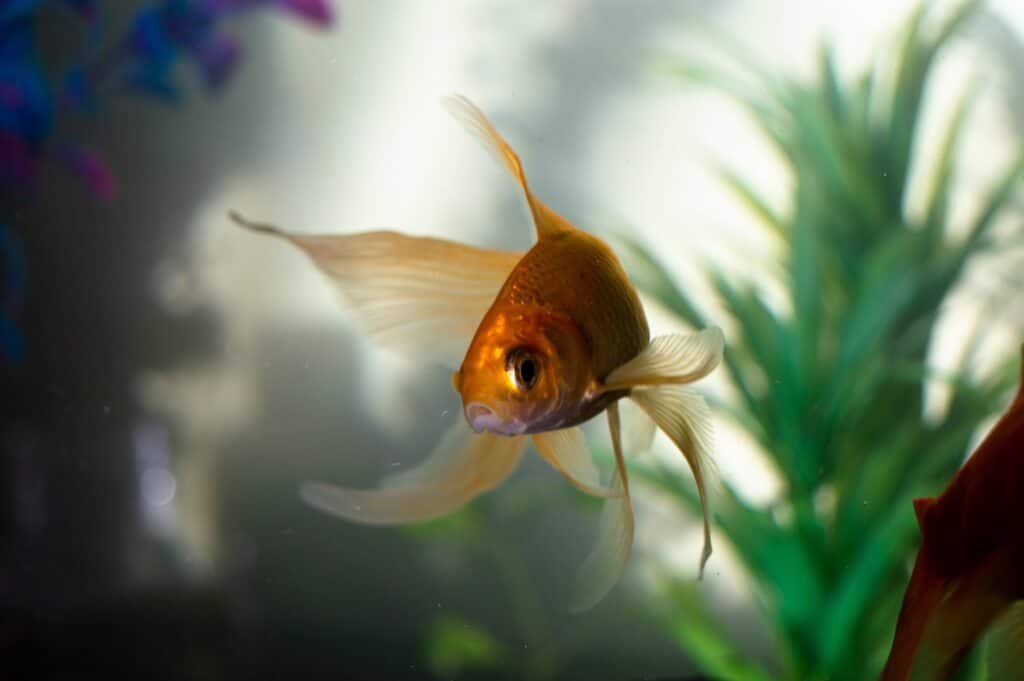
Fish are the most common type of lake animals. There are over 32,000 different species of fish, and they can be found in every lake on earth. The most common type of lake fish is the carp, which is a freshwater fish that is native to Europe and Asia. Other popular types of lake fish include trout, salmon, and bass.
Top 9 fishes that live in lake ecosystems
1. Carp (Cyprinus carpio)
A common freshwater fish that is found in lakes all over the world. Carp are an important food source for humans and other animals, and play a role in the ecology of lake ecosystems. Carp can reach up to 1.6m in length and weigh up to 40kg. Carp are omnivorous, eating both plants and animals.
2. Rainbow Trout (Oncorhynchus mykiss)
A popular sport fish that is found in lakes all over the world. Rainbow trout are an important food source for humans and other animals, and play a role in the ecology of lake ecosystems. Rainbow trout can reach up to 1.2m in length and weigh up to 8kg. Rainbow trout are mostly carnivorous, eating other fish, insects, and crustaceans.
3. Salmon
Salmon are a type of fish that can be found in both freshwater and saltwater environments. they are an important part of the ecosystem in lakes, where they provide a food source for other animals.
Salmon are a keystone species, meaning their presence helps to maintain the balance of the ecosystem. Salmon populations have declined in recent years due to overfishing and habitat loss.
4. Catfish
These are a diverse group of ray-finned fish. Catfish are found in fresh, brackish and, saltwater environments. Catfish are an important part of the lake ecosystem and play a role in the food web. Catfish are predators and eat other fish, invertebrates, and plants. Catfish are also an important food source for other animals.
5. Perch (Perca fluviatilis)
Perch is a common freshwater fish found in lakes and rivers throughout Europe and northern Asia. It is an important species in the ecology of many freshwater ecosystems. Perch is a predator fish and feeds on smaller fishes, invertebrates, and zooplankton. Perch plays an important role in controlling populations of these smaller organisms and in turn, affects the overall structure of the food web in a lake ecosystem.
6. Crappie
Crappie is a common freshwater fish that can be found in lakes all over the world. They are an important part of the ecosystem, providing food for larger predators and helping to control populations of smaller prey fish. Crappie generally prefers shallow, weed-choked waters and can be found in both deep and shallow parts of a lake.
7. Walleye
The Walleye (Sander vitreus, formerly Stizostedion vitreum) is a freshwater perciform fish native to most of Canada and the northern United States. It is a North American close relative of the European Zander, also known as the pikeperch. Walleyes show a fair amount of variation across watersheds.
In general, fish within a watershed are quite similar and are considered part of the same population or “stock”. Walleyes grow to about 80 cm (31 in) in length and weigh up to about 9 kg (20 lb). The maximum recorded size for the fish is 107 cm (42 in) and 13 kg (29 lb).
The average Walleye lifespan is typically around 9 years. Walleyes are largely olive and gold in color. The dorsal side of a Walleye is olive, shading into brownish-olive on the flanks. The sides have a series of dark vertical bars instead of spots and the belly is white or pale yellow. The Walleye is sometimes referred to as the Yellow Walleye to distinguish it from its close relative the Blue Walleye, which is a different species (Sander vitreus glaucum).
8. Sunfish
Sunfish is a freshwater fish that can be found in lakes all over the world. It is an important part of the ecosystem and plays a vital role in the food chain. Sunfish are omnivorous and eat both plants and animals. They are an important food source for larger fish, birds, and mammals. Sunfish are a popular game fish and are enjoyed by people all over the world.
Sunfish are typically 10-30 cm in length and have a lifespan of 5-10 years. They are gregarious fish and can often be seen swimming in large groups.
9. Eel
Eels are a common sight in lakes all over the world. They play an important role in the ecosystem of these bodies of water, serving as both predators and prey. Eels are typically found near the bottom of the lake, where they scavenge for food. Their diet consists mostly of smaller fish, but they will also consume invertebrates and organic matter. Eels are an important food source for larger predators such as fish, birds, and mammals.
Eels have long, slender body that is covered in slimy mucus. This mucus helps to protect them from predators and parasites. Eels can grow to be quite large, with some species reaching over 3 feet in length. Eels are typically brown or green, with a dark dorsal stripe running along their back.
Amphibians
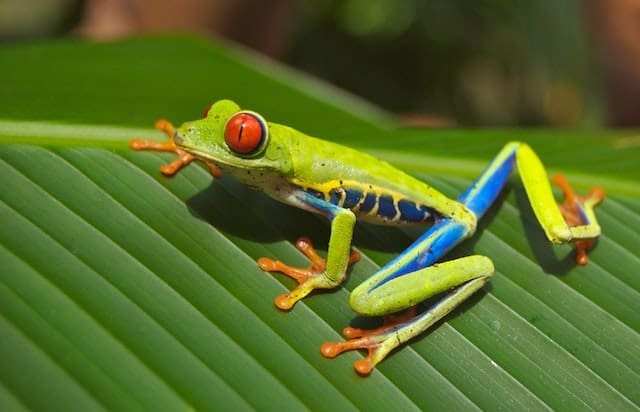
Amphibians are also common lake animals, particularly frogs and toads. These creatures spend their lives both in and out of the water, and they are especially prevalent in areas where lakes are surrounded by forests. Some of the most popular types of amphibians that live in lakes include the American toad, the common frog, and the green tree frog.
Read Also: What Animals Live in Caves
Top 6 amphibians live in the lake ecosystem
1. Frogs
Frogs are found in nearly every part of the world and can live in a variety of habitats, including ponds, lakes, rivers, and marshes. Frogs play an important role in the ecology of a lake ecosystem and their abundance can tell us a lot about the health of the environment.
Frogs are predators that eat a variety of insects and other small animals. Frogs also play an important role in the food chain by providing food for larger predators, such as snakes and birds.
2. Toads
Toads are one of the most abundant lake animals in a lake ecosystem. They play an important role in the food chain, and their numbers can fluctuate greatly depending on the time of year and the water conditions. Toads are predators, and their diet consists mostly of insects. Toads are also an important food source for many other animals, including fish, reptiles, and amphibians.
Toads can be found in all parts of a lake, but they are most common near the shoreline. Toads are active during the day and night, and they typically mate and lay eggs in the springtime. Toads can live for many years, and some species can grow to be quite large.
3. Salamanders
Salamanders play an important role in the ecology of many lakes. They are predators of invertebrates and small vertebrates, and their larvae are an important food source for fish. Salamanders are also a key part of the food web that helps to control populations of insects and other pests.
Two main types of salamanders live in lakes: the newts and the mudpuppies. Newts are smaller than mudpuppies and have a more streamlined body shape that helps them to swim quickly through the water. Mudpuppies, on the other hand, are larger and have a more robust body that is better suited for life in murky, stagnant waters.
4. Newts
Newts are a type of salamander that is common in many lakes. They are typically small, averaging around 4 inches in length, and have smooth, wet skin. Newts play an important role in the ecology of lake ecosystems, as they help to control the populations of insects and other small animals. Newts are also an important food source for many predators, such as fish, snakes, and frogs.
Newts are found throughout the world but are most common in temperate climates. In North America, newts can be found from Alaska to New Mexico. Newts are also found in Europe, Asia, Africa, and Australia.
5. Axolotls
The Axolotl is a permanently aquatic salamander found in lakes in Mexico. It is the largest member of the Ambystomatidae family, reaching a length of up to 60 cm (24 in). Axolotls have broad heads, and their eyes are lidless and prominent. Their limbs are underdeveloped and possess numerous internal and external gills. Axolotls are capable of regenerating lost body parts, and they are commonly used in scientific research due to their ability to regenerate their limbs.
The Axolotl is an important member of the lake ecosystem, acting as both a predator and prey species. It is a popular food source for fish, birds, and other animals, and plays an important role in the food web. Axolotls are also a keystone species, meaning their presence is essential to the health of the ecosystem.
6. Turtles
Turtles are reptiles of the order Testudines. The turtles are an ancient group, existing for 220 million years. turtles are distributed widely, with turtles living on every continent except Antarctica. turtles play an important role in the ecology of many lake ecosystems.
Mammals
Mammals are also found in lakes, though they are not as common as fish or amphibians. Some of the most popular lake-dwelling mammals include beavers, otters, and muskrats. These animals build their homes near the water’s edge and spend much of their time in the lake itself.
Top 5 mammals that live in lake ecosystems
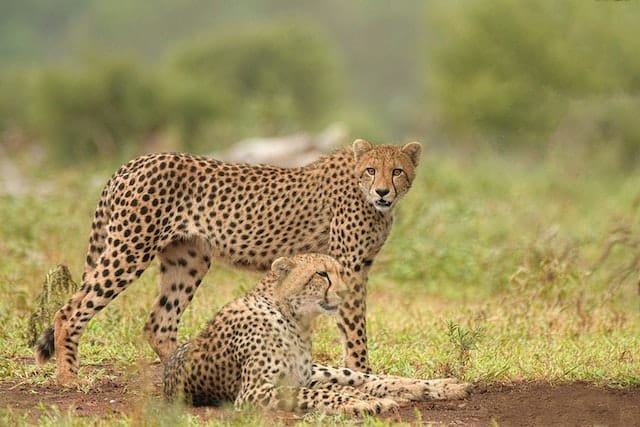
1. Sirenians
Sirenians are a group of aquatic mammals that include manatees and dugongs. They are found in tropical and subtropical waters around the world, including in lakes. Sirenians are large animals, with adults ranging in size from 2 to 4 meters long and weighing up to 1,000 kg. Sirenians are herbivores, feeding on aquatic plants. Sirenians play an important role in the ecology of lake ecosystems, serving as a key link in the food chain. Sirenians are listed as vulnerable to extinction by the IUCN Red List.
2. Beavers
Beavers are a keystone species in many freshwater ecosystems, particularly in boreal forests. They are well known for their dam-building activities, which can greatly alter the hydrology and ecology of an area. beavers are found in lakes throughout North America, Europe, and Asia. In North America, beaver populations have declined due to overhunting and habitat loss, but beavers are still an important part of many freshwater ecosystems. In Europe and Asia, beaver populations are thought to be stable or increasing.
Beavers play an important role in the ecology of lakes. Their dams can create new habitats for other aquatic and riparian (riverside) species. Beavers also change the hydrology of an area by slowing the flow of water and trapping sediment. This can improve water quality by reducing erosion and nutrient runoff. beavers also play a role in the carbon cycle by storing carbon in their dams and lodgepole trees.
3. Otters
Otters are found throughout the world, but they are most common in Asia. In North America, otters are found in lakes and rivers in the northern United States and Canada. Otters play an important role in the ecology of a lake ecosystem. They help to keep the water clean by eating fish and other aquatic animals. Otters also help to control the population of fish and other aquatic animals by eating them.
4. Indus blind dolphin
Indus blind dolphin (in Pakistan) is a freshwater mammal found only in the Indus river. This dolphin is very blind and has poor eyesight. However, it can make very sharp turns and swims very fast in the water. It feeds on fish, shrimp, and other small aquatic animals.
5. Minks
Minks are a common sight around lakes and ponds, where they feed on fish, frogs, and other small aquatic animals. These predators play an important role in regulating the populations of their prey, keeping the ecosystem in balance. Mink are also important to humans as their fur is widely used in the fashion industry.
Birds
Birds are also common around lakes, as they use the water to drink, bathe, and fish. Some of the most popular types of birds that live near lakes include ducks, geese, and herons. These animals are typically found near the shoreline or on small islands in the middle of the lake.
Read Also: What Animals Live In Deserts
The top 8 birds live in Lake Ecosystem
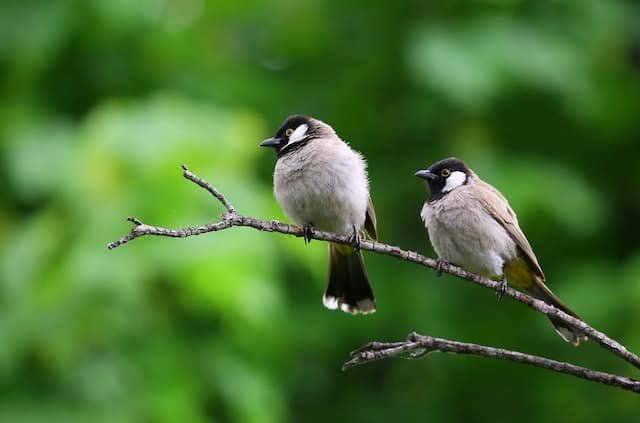
1. Ducks
Ducks are a common sight in many lakes, and they play an important role in the ecology of these ecosystems. Ducks are waterbirds that are found in both fresh and saltwater environments. They are generally omnivorous, eating a variety of plant and animal matter. ducks play an important role in the lake ecosystem by helping to keep the water clean and by providing food for other animals.
2. Geese
Geese are found in many different types of habitats, but they are especially common in lakes. They play an important role in the ecology of lake ecosystems by eating aquatic plants and animals, which helps to keep the water clean. geese are also a food source for other animals, such as fish and amphibians.
3. Herons
Herons are large, long-legged birds that live in wetlands all over the world. In lake ecosystems, herons play an important role in controlling the population of fish and other aquatic animals. They do this by eating a lot of small fish, which helps to keep the water clean and free from overpopulation.
4. Egrets
Egrets are one of the most abundant animals in a lake ecosystem. They play an important role in the ecology of the lake by eating fish and other aquatic animals. Egrets are found all over the world, but they are most common in tropical and subtropical regions. In North America, egrets are found in Florida, Louisiana, and Texas. In Asia, egrets are found in India, China, and Japan.
5. Cormorants
Cormorants are very widespread, occurring on all continents except Antarctica. In terms of abundance, cormorants are some of the most populous waterbirds in the world. In North America, cormorants are estimated to number in the millions.
Cormorants play an important role in lake ecosystems. They are top predators that help to keep populations of smaller fish in check. Additionally, cormorants often eat fish that are sick or injured, which helps to keep the overall health of the lake’s fish population high.
6. Pelicans
Pelicans are large waterbirds with long beaks and necks. They can be found near lakes, rivers, and oceans. Pelicans eat fish, crustaceans, and other small animals.
7. Ospreys
Ospreys are large birds of prey that can be found near lakes and rivers. Ospreys eat fish, and they play an important role in the ecology of lake ecosystems. Ospreys are found in North and South America, Europe, Asia, and Africa.
8. Kingfishers
Kingfishers are found in almost all types of freshwater habitats, from large rivers to small streams. They are most abundant lake animals that are found near the water’s edge, where they can perch and scan the water for fish.
Kingfishers play an important role in the ecology of lake ecosystems. They help to control populations of smaller fish, keeping the ecosystem in balance. kingfishers also provide food for other animals, such as otters and birds of prey.
What animals are endangered due to the depletion of wetland habitats?
There are a number of animals that are endangered due to the depletion of wetland habitats. These include:
- American alligator
- Florida Panther
- Whooping crane
- Bog turtle
- Atlantic salmon
- American eels
- California red-legged frogs
- Mississippi gopher frog
All of these animals are at risk due to the loss of wetland habitats.
RAMSAR Convention
The Ramsar Convention is an international treaty that provides a framework for the conservation and sustainable use of wetlands. The Convention was signed in Ramsar, Iran, in 1971 and came into force in 1975.
The Convention recognizes the vital role that wetlands play in supporting biodiversity and providing a range of other ecosystem services. The treaty also acknowledges the importance of wetlands as a source of livelihood for local communities.
The Ramsar Convention provides a number of tools for conserving wetlands, including:
- designation of Wetlands of International Importance
- development of national wetland policies
- capacity building and training
- exchange of information and expertise
By ratifying the Ramsar Convention, countries commit to taking measures to conserve and sustainably use wetlands within their territories.
Read Also: What Animals Live In Bamboo Forests

